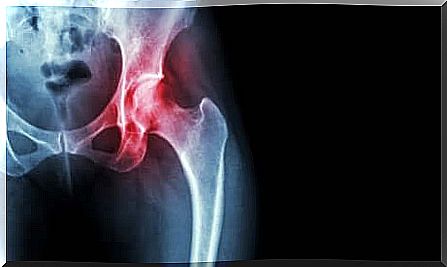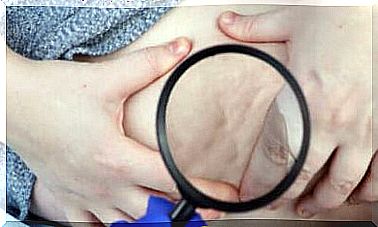Avascular Necrosis Of The Femoral Head
Avascular necrosis is the death of bone tissue. Why is it happening? How does it affect the lives of patients? We will find out in this article.

Avascular necrosis, like all necrosis, is caused by a lack of blood supply to tissues. In this particular case, it affects the bones, which has a number of quite serious consequences.
We will see below what avascular necrosis of the femoral head is, how it affects patients’ quality of life, and its treatment options.
As some articles point out, such as Coxalgia cronica: avascular necrosis of the femoral head, avascular necrosis is not very common. But that does not mean that it does not deserve special attention, as its sequelae are very serious and the risks to patients are very high.
What are the causes of avascular necrosis?
The first question that may come to mind is what are the causes of this very serious problem which has quite serious consequences for the patients. Some of the reasons it may appear are as follows:
- History of trauma : injury or dislocation of the joints can affect the blood vessels, causing a lack of blood supply
- Oncology treatments : being subjected to radiation or chemotherapy treatments weakens the body, bones and can damage blood vessels
- Hypercoagulant states : this predisposes to thrombosis and excess clots significantly reduces blood supply
- Prolonged steroid therapy : an excess of steroids (in high doses) may be one of the causes of avascular necrosis of the femoral head

Symptomatology
The symptomatology of avascular necrosis of the femoral head will be more or less severe depending on the stage in which the patient is. Thus, we can differentiate a mild stage, a moderate stage and the last, severe. Let’s take a look at some of the characteristics that a patient may exhibit.
At the mild stage, the patient may not have any symptoms. This means that avascular necrosis can go completely unnoticed. However, if it is not diagnosed, it will get worse. Thus, the patient will begin to notice the following:
- Pain in the joint affected by necrosis when weight is placed on it
- Discomfort when resting, lying or sitting
- Pain that worsens and radiates to the groin, thighs, buttocks, and even knees
The pain will intensify to the point of becoming a constant discomfort that cannot be relieved in any way. This affects the quality of life of patients, limiting them. This is why it is very important to go to the doctor at the slightest symptom. The reason is that the bone can lose its shape, which causes arthritis.
Treatments

When a patient is diagnosed with avascualar necrosis, the doctor will consider the patient’s age, bone quality, stage of disease, and damage already done.
There are more conservative treatments and others that involve surgery.
- Applying support : Crutches or canes are an option for less severe cases. However, it does not give entirely satisfactory results.
- Medicines : they usually have a much more positive effect, some are antihypertensives, lipid lowering agents, fibrinolytics and vasoactives
- Hyperbaric oxygenation : inhaling oxygen at high pressure increases the oxygenation of the plasma. In the light stages it can have a very positive impact
- Electrical stimulation : promotes bone formation, as avascular necrosis leads to weakened bones which break easily
What happens when avascular necrosis is at a much more advanced stage? Although these treatments can be used, surgery is the most recommended.
However, even in moderate cases, the doctor may consider this option, as the combination treatment will increase the chances of a positive result.
In case of discomfort, we recommend that you consult a doctor immediately. If there are no symptoms, we want to make you aware of the importance of regular checks to check that everything is fine. Often, the absence of symptoms does not mean that we have no problem. In this case, for example, an early diagnosis will prevent us from having to undergo an operation.









